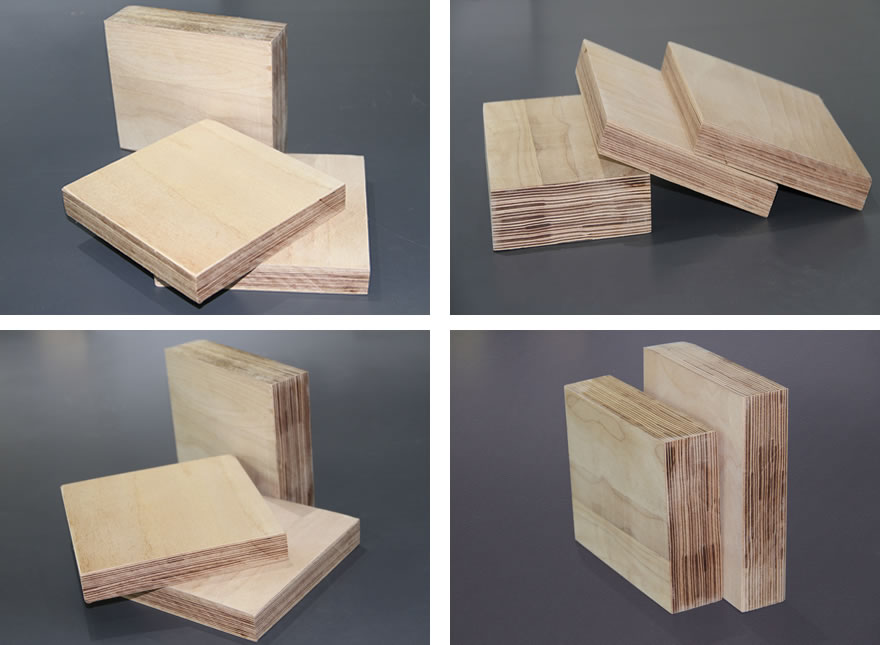Electrical Laminated Wood Introduction Electrical Laminated Wood is a high-performance composite material made by ...
Electrical Laminated Wood is a high-performance composite material made by impregnating natural wood (such as birch or maple) with synthetic resins (e.g., phenolic or epoxy resins) and curing it under high temperature and pressure. It combines the lightweight properties of wood with the durability of resins, offering the following key characteristics:
Electrical Performance: High dielectric strength (≥20 kV/mm), low dielectric loss, suitable for high-voltage insulation.
Mechanical Performance: Compressive strength ≥80 MPa, flexural strength ≥100 MPa, resistant to impact and vibration.
Environmental Adaptability: Heat-resistant (up to 180°C), moisture-resistant, and chemically resistant (to oils, weak acids/bases).
Machinability: Can be cut, drilled, or milled to meet complex structural requirements.

Specifications are tailored to application scenarios, with key parameters as follows:
| Parameter | Typical Specifications | Description |
|---|---|---|
| Thickness | 0.5 mm – 50 mm (customizable up to 100+ mm) | Thin sheets for insulating liners; thick plates for load-bearing structures. |
| Panel Size | Standard: 1000 mm × 2000 mm | Customizable up to 3000 mm × 6000 mm to minimize joint losses. |
| Temperature Rating | B-class (130°C), F-class (155°C), H-class (180°C) | H-class uses epoxy resin for superior high-temperature resistance. |
| Surface Finish | Smooth, sanded, pre-coated insulating paint | Sanded surfaces enhance adhesion; pre-coated paint improves arc resistance. |
| Compliance Standards | IEC 60893, GB/T 1303, ASTM D709 | International standards ensure material consistency and reliability. |
Density is a critical indicator, directly affecting mechanical strength and insulation performance:
| Density Type | Range (g/cm³) | Characteristics & Applications |
|---|---|---|
| Standard | 1.2 – 1.4 | – Lightweight, suitable for low-voltage insulation (e.g., transformer pads). – Dielectric strength ≥15 kV/mm. |
| High-Density | 1.4 – 1.6 | – High strength, compressive strength ≥120 MPa, used for load-bearing parts (e.g., motor slots). – Stable in high-frequency vibration environments. |
| Ultra-Dense Custom | 1.6 – 1.8 (special process) | – For military or aerospace applications: insulation supports in extreme environments. |
lectrical laminated wood is widely used in the following fields:
1. Electrical Equipment
Transformers:
Insulating support bars: Prevent winding deformation (requires high compressive strength).
End rings/pads: Isolate high/low-voltage windings (dielectric strength ≥25 kV/mm).
High-voltage switchgear:
Insulating barriers: Block arcs and phase-to-phase short circuits (temperature resistance ≥155°C).
Operating mechanism brackets: Resistant to mechanical shock (high-density type).

2. Rail Transportation
Pantograph insulating sliders:
Base material must withstand high temperatures (180°C) and friction (epoxy resin recommended).
Traction motors:
Slot wedges: Secure windings, resist high-frequency vibration fatigue (density ≥1.5 g/cm³).
Insulating end caps: Prevent current leakage (pre-coated with moisture-resistant paint).
3. Renewable Energy & Industrial Equipment
Wind turbines:
Insulating bearing housings: Resistant to low temperatures (-40°C) and wind-induced vibrations (anti-fatigue design).
PV inverters:
High-voltage insulating boards: UV-resistant for outdoor use (sanded surfaces reduce dust accumulation).
Industrial motors:
Commutator spacers: Resistant to corona discharge and carbon dust (high surface smoothness).
4. Specialized Fields
Military equipment:
Radar antenna insulating bases (stable across -50°C to 200°C).
Aerospace:
Motor liners (ultra-lightweight, heat-resistant, custom density 1.6 g/cm³).
| Performance | Standard Type | High-Density Type | Ultra-Dense Custom Type |
|---|---|---|---|
| Dielectric Strength | 15–20 kV/mm | 20–25 kV/mm | ≥25 kV/mm |
| Compressive Strength | 80–100 MPa | 100–120 MPa | ≥150 MPa |
| Operating Temperature | -30°C–130°C (B-class) | -40°C–155°C (F-class) | -50°C–180°C (H-class) |
| Typical Applications | Low-voltage insulation pads, cable supports | High-voltage switch brackets, motor slots | Aerospace motors, extreme-environment devices |
By understanding these technical specifications and application scenarios, users can effectively select electrical laminated wood. For practical applications, collaborate with suppliers to validate material performance (e.g., withstand voltage tests, temperature-rise tests) based on specific operating conditions (voltage, temperature, mechanical loads).
If you are interested in our products,, please send us a message and we will contact you as soon as we receive it. Email: info@ztelecgroup.com whatsApp: +8616650273778